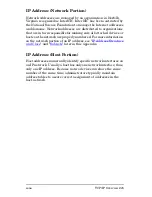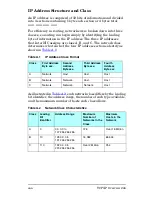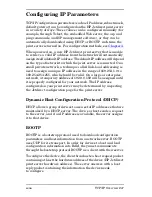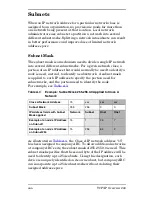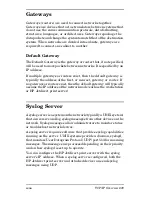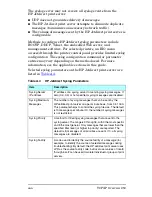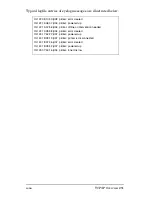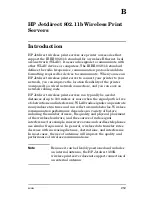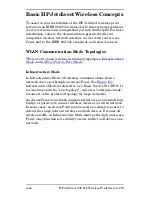
ENWW
HP Jetdirect 802.11b Wireless Print Servers 259
EAP/802.1x.
IEEE 802.1x EAP (Extensible Authentication
Protocol) is used on networks that use authentication servers, such
as a RADIUS (Remote Authentication Dial In User Service, RFC
2138) server, for client authentication on a network. HP Jetdirect
802.11b wireless print servers support popular authentication
methods based on EAP, including:
●
LEAP
(Lightweight Extensible Authentication Protocol). LEAP
is a Cisco Systems, Inc. proprietary protocol. LEAP requires an
EAP User Name and EAP Password. Dynamic encryption keys
are also used.
●
PEAP
(Protected Extensible Authentication Protocol). PEAP
uses digital certificates for network server authentication and
passwords for client authentication. PEAP requires an EAP
User Name, EAP Password, and CA Certificate. Dynamic
encryption keys are also used.
●
EAP-MD5
(EAP using Message Digest Algorithm 5, RFC 1321).
EAP-MD5 uses a password protected by the MD5 encryption
algorithm. For MD5, enter an EAP User Name and EAP
Password. Static encryption keys are also used.
●
EAP-TLS
(EAP using Transport Layer Security, RFC 2716).
EAP-TLS uses X.509-compliant digital certificates for both
client and network server authentication. TLS requires an EAP
User Name, Jetdirect Certificate, and CA Certificate. Dynamic
encryption keys are also used.
●
EAP-TTLS
(EAP using Tunneled Transport Layer Security).
EAP-TTLS is an EAP-TLS extension that also uses
X.509-compliant digital certificates. TTLS requires an EAP
User Name, EAP Password and CA Certificate. Dynamic
encryption keys are also used.
As indicated for each EAP/802.1x authentication method,
configuration of additional parameters may be necessary.
EAP/PSK.
For small office networks that do not have an
authentication server, HP Jetdirect wireless print servers support
network authentication using Extensible Authentication Protocol
with a Pre-shared key (EAP/PSK). Using a pass-phrase entered by
the user, the print server generates a pre-shared key used for
network access and communications.
When configured for EAP/PSK authentication, the print server uses
Wi-Fi Protected Access (WPA) dynamic encryption protocols for
wireless communications.

